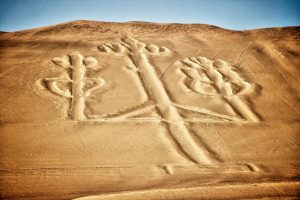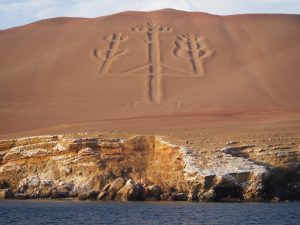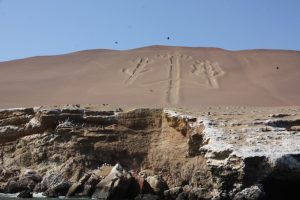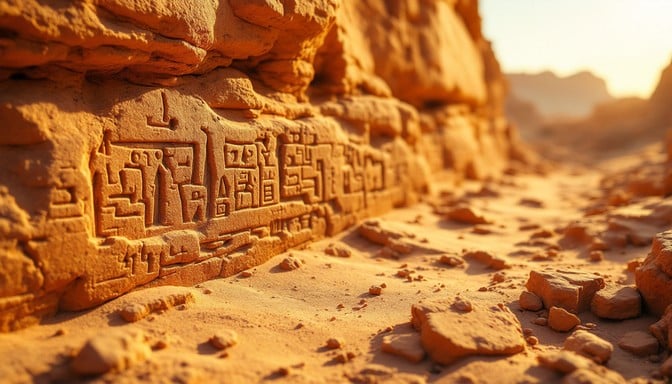Paracas Candelabra: Mysterious Desert Glyph
On the arid slopes of the Paracas Peninsula in southern Peru stands one of the most enigmatic geoglyphs in the world: the Paracas Candelabra geoglyph. This enormous figure, over 180 meters tall, is etched into the side of a hill overlooking the Pacific Ocean. Its shape resembles a candelabra or trident, visible for miles and even from passing ships, leaving scholars and visitors alike wondering about its purpose and origins.

Origins and Date
The Paracas Candelabra is thought to date back to 200 BCE–200 CE, possibly created by the Paracas culture. Unlike the Nazca Lines, it is located on a steep hillside, and its size and visibility suggest it may have served as a navigational marker or held ritual significance for coastal travelers.
Possible Functions
The geoglyph’s precise function remains uncertain. Some researchers suggest it represented a sacred symbol for the Paracas people, perhaps linked to water, fertility, or local deities. Others speculate it acted as a guide for sailors, marking safe passage along the rugged coast. Its position near the shoreline reinforces the idea that it was intended to be seen from afar — either by humans or, as some theories suggest, by the gods above.

Construction and Design
The Paracas Candelabra was created by scraping away the top layer of darker soil to reveal lighter subsoil beneath, similar to techniques used in the Nazca desert. Its preservation owes much to the arid climate and minimal rainfall, allowing it to survive for over two millennia. Despite centuries of erosion, its form remains strikingly clear, hinting at careful planning and symbolic intent.

Connections to Other Geoglyphs
Some researchers note similarities between the Paracas Candelabra and other Andean geoglyphs, such as the Nazca Lines. The use of large-scale ground drawings for ritual or navigational purposes appears to have been a recurring theme in pre-Columbian Peru, reflecting a culture attuned to both landscape and sky.
Enduring Mystery
The Paracas Candelabra geoglyph continues to fascinate modern observers. Its scale, location, and ambiguous purpose provoke questions about the knowledge, beliefs, and intentions of its creators. Like other geoglyphs around the world, it challenges us to consider how ancient peoples communicated across space and time, leaving messages that endure in stone and earth.
Additional reading:





